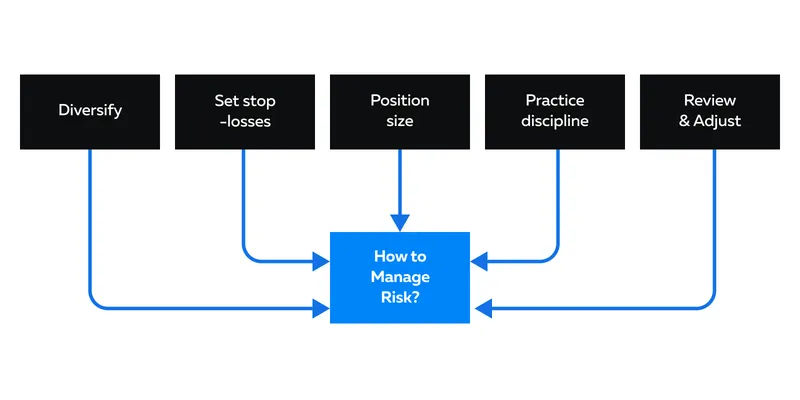

December Trading
Deals Are Live!
Save on Global+, data access,
and add-ons.
See All December Deals

Black Friday
Nov 28-Dec 31
17 days : 6 hours
50% OFF Global+ Quarterly
+ 50% OFF Data (3 months)

Cyber Monday
Dec 1 - Dec 31
17 days : 6 hours
60% OFF Global+ Monthly
+ Data (1 month)

Add-on Deals
Dec 1 - Dec 31
17 days : 6 hours
50% OFF
Add-ons

New Year Sale
Dec 26 - Jan 1
11 days : 6 hours
30% OFF Global+ Lifetime
*Data not included
Education
January 5, 2024
SHARE
Using Economic Calendars for Trading: A Comprehensive Guide
Have you ever wondered how some traders precisely predict market moves?
Well, the secret lies in something you might not have fully explored yet –
economic calendars. Don’t let the jargon scare you away; think of them as
your roadmap to potential profits in the dynamic financial landscape.
In this article, we’re diving deep into the world of economic calendars,
breaking down the complex stuff into bite-sized pieces. Also, we will
unravel the mysteries of economic events and discover how they can help you
execute profitable trades. Let’s get started.
Understanding Economic Calendars
Economic calendars serve as indispensable tools for investors, traders, and
analysts. They provide a comprehensive overview of scheduled economic events
and releases.
Unlike geopolitical events such as the G7 or OPEC meetings, economic
calendars predominantly focus on pre-planned meetings and financial
indicators. A thorough analysis of these indicators enables traders to gain
insights into the state of the global economy. Let’s explore this in more
detail.
What is an Economic Calendar?
An economic calendar is a chronological compilation of upcoming:
-
Events
-
Announcements, and
-
Data releases
These calendars encompass a wide array of information, including but not
limited to economic indicators, central bank meetings, government reports,
and corporate earnings releases.
Key Inclusions
Economic calendars include certain crucial aspects, which are:
-
Time zones:
-
Economic calendars include time zones.
-
This inclusion enables the investors to anticipate and react to
economic developments promptly, irrespective of their
geographical location.
-
-
Significant indicators:
-
Economic calendars feature several significant indicators.
-
These indicators range from employment reports and inflation
data to manufacturing indices and GDP releases. -
Investors use these indicators to:
-
Gauge the health of economies and
-
Make informed decisions regarding their portfolios.
-
-
Economic Events vs. Geopolitical Events
It’s important to distinguish economic events from geopolitical events.
While geopolitical events like G7 or OPEC meetings can have profound effects
on markets, economic calendars primarily focus on events that are scheduled
in advance. This emphasis on pre-planned events allows investors to:
-
Anticipate market movements based on data and forecasts
-
Prepare their trading strategies accordingly
Key Features of Economic Calendars
Economic calendars boast several key features that empower traders and
investors to achieve trading success. Let’s understand them in-depth to
harness the full potential of economic calendars.
A) Time Zones
-
With economic events unfolding across different regions and time
zones, economic calendars play a pivotal role in ensuring timely
responses. -
A well-designed economic calendar will display events in their
respective local times, helping users grasp the chronological
sequence of events worldwide. -
This feature is particularly valuable for global traders who need to
align their strategies with market-moving announcements.
B) Event Descriptions:
-
Each event listed in the economic calendar comes with a detailed
description outlining its:-
Nature and
-
Potential impact
-
-
Traders must comprehend these descriptions to assess the
significance of an event. -
Whether it’s a central bank meeting, employment report, or GDP
release, understanding the context and implications of each event is
essential for informed decision-making.
C) Country-Specific Information:
-
Economic calendars provide a breakdown of events by country that
lets users filter events by specific regions of interest. -
This feature is especially beneficial for traders who specialize in
particular markets. -
For instance, a forex trader may customize their calendar to
highlight events in the currencies they are actively trading.
D) Cyclical vs. Non-Cyclical Events:
-
Some economic indicators follow predictable cycles, such as regular
interest rate decisions or quarterly earnings reports. -
On the other hand, indicators like the Consumer Price Index (CPI)
might not adhere to a fixed schedule. -
Understanding the cyclical nature of events aids traders in:
-
Anticipating market movements and
-
Adapting trading strategies accordingly.
-
How to Customize and Interpret Economic Calendars?
To gain maximum advantage, traders can customize the economic calendars as
per their specific needs. Read the table below for some effective
customization options:
|
Customization Techniques |
Explanation |
Benefits |
|
Filtering by Country and Impact Level |
Traders can customize economic calendars by filtering |
This targeted approach allows users to focus on the |
|
Setting Personalized Alerts |
Utilize alert features offered by economic calendars to |
This ensures that traders do not miss critical |
|
Historical Data Analysis |
Explore historical data available on economic calendars |
This analysis provides valuable insights into potential |
Major Economic Indicators and Their Impact
Understanding major economic indicators is crucial as they serve as
barometers of economic health and can significantly influence market
movements. Read the table below to understand the breakdown of key economic
indicators and their typical impact on different market sectors:
|
Economic Indicators |
Explanation |
Market Impact |
|
Interest Rate Decisions |
Central banks, such as the U.S. Federal Reserve or the |
|
|
Unemployment Figures |
Unemployment rates reflect the health of the job market |
|
|
Consumer Price Index (CPI) |
CPI measures the average change in prices paid by |
|
|
Gross Domestic Product (GDP) |
GDP represents the total value of goods and services |
|
Analyzing Economic Events for Trading Opportunities

Economic events play a pivotal role in:
-
Shaping market dynamics
-
Understanding market trends, and
-
Spotting profitable market opportunities
Now, let’s learn how to interpret economic events.
Interpreting Economic Events
Analyzing economic events involves more than just understanding the numbers.
It requires insight into how these events can influence
market sentiment
. Let’s learn through an example.
The Event
-
The Federal Reserve’s most
recent hike
in interest rates was in July 2023. -
Fed raised its benchmark rate by 25 basis points, putting the
federal funds’ target rate range between 5.25% and 5.50%
The Interpretation
Traders who anticipated this move took the following steps:
-
Pre-Event Analysis:
-
Before the announcement, traders assessed the economic landscape
by considering factors like:-
Inflation
-
Employment data, and
-
GDP growth.
-
-
A comprehensive understanding of these factors provided them
clues about the likelihood of a rate hike.
-
-
Volatility Expectations:
-
Knowing that interest rate decisions often lead to market
volatility, traders accommodated for potential price swings by:-
Adjusting their positions or
-
Employing risk management strategies
-
-
-
Post-Event Analysis:
-
Following the announcement, traders performed a quick analysis
of market reactions. -
The traders found that:
-
The stock market experienced initial volatility, with
certain sectors being more sensitive to interest rate
changes. -
Forex markets witnessed significant currency movements, such
as a strengthening of the USD.
-
-
The Benefits
Traders who were prepared for these scenarios:
-
Capitalized on the volatility or
-
Protected their positions.
Economic News and Market Trends
Understanding how
economic news correlates with market trends is a key element of
successful trading. Historical data often highlights patterns where certain
economic indicators consistently impact specific markets. Traders can use
economic calendars to anticipate the following:
|
Identify Trends |
Anticipate Market Movements |
|
By analyzing historical data traders can identify trends
|
By utilizing economic calendars, traders can anticipate
|
|
For instance, strong employment figures may historically |
For instance, if a trader observes a pattern where |
Note: Anticipating market movements based on economic news doesn’t guarantee
success. Therefore, incorporating
effective risk management strategies
is essential. This includes:
-
Setting stop-loss orders and
-
Diversifying portfolios to mitigate potential losses.
Additionally, traders can use advanced market analysis tools like Bookmap
that provide a visually rich environment for traders to analyze market data
and make informed decisions. It offers features such as heatmap
visualization, which allows traders to see market dynamics and depth in a
way that was not possible before.
Practical Application in Trading
Developing a trading strategy around economic calendar analysis involves a
systematic approach that integrates careful planning, risk management, and a
keen understanding of market reactions to specific events. Let’s delve
deeper.
How to Develop a Trading Strategy?
Read the table below for a step-by-step guide:
|
Steps |
Explanation |
|
Identify High-Impact Events |
|
|
Set Up Alerts |
|
|
Analyze Historical Market Reactions |
|
|
Evaluate Market Expectations |
|
|
Plan Trades Based on Expected Outcomes |
Develop a trading plan that aligns with your
|
|
Implement Risk Management |
|
How to Achieve a Balance Between Risk and Potential Reward?
Trading based on economic news involves a delicate balance between risk and
potential reward. You can create a perfect one by considering the following:
-
Evaluate the potential impact of the economic event on the market.
-
Assess the historical volatility associated with similar events to
gauge potential risks. -
Determine the appropriate size of your positions based on the level
of risk you are comfortable with. -
Avoid over-leveraging, as unexpected market movements can lead to
significant losses. -
Spread your investments across different assets or markets to
diversify risk. -
Be prepared to adapt your strategy based on real-time market
developments.
Integrating Economic Calendars into Your Trading Strategy

Economic calendars help traders capitalize on market movements influenced by
economic events. You can integrate these calendars into your trading
strategy by creating a personalized plan and implementing effective risk
management strategies.
Creating a Personalized Trading Plan
Developing a personalized trading plan is essential for aligning your strategy with your trading style and risk
profile. Consider the following strategies based on different risk
preferences:
|
For Risk-Averse Traders |
For High-Risk Traders |
|
Focus on Low-Volatility Events Target events with historically lower volatility to |
Seek High-Impact Events Look for events with the potential for substantial |
|
Conservative Position Sizing Use smaller position sizes to reduce exposure and |
Aggressive Trading Tactics Employ more aggressive trading tactics, including higher |
|
Long-Term Perspective
|
Stay Informed and Adaptive
|
Risk Management Strategies
Effective risk management is paramount in mitigating potential losses and
preserving capital. Consider implementing the following risk management
strategies:

-
Diversification:
-
Spread your investments across different assets or markets to
reduce the concentration risk. -
Diversification helps cushion the impact of adverse events on
your overall portfolio.
-
-
Setting Appropriate Stop-Losses:
-
Establish clear stop-loss levels based on:
-
Your risk tolerance and
-
The volatility associated with the event.
-
-
This ensures that losses are controlled, and emotions don’t
override rational decision-making.
-
-
Position Sizing:
-
Determine the size of your positions based on:
-
Your risk tolerance and
-
The potential impact of the economic event
-
-
Avoid over-leveraging to prevent significant financial setbacks.
-
-
Psychological Discipline:
-
Acknowledge the psychological aspects of trading, especially
during high-impact events. -
Ensure you are adhering to your trading plan and not succumbing
to impulsive decisions driven by fear or greed.
-
-
Regularly Review and Adjust:
-
Periodically review and adjust your risk management strategies.
-
Try to stay adaptive. This ensures that your risk management
aligns with the evolving landscape.
-
How to Maintain Trading Discipline
Trading on economic news can evoke emotional responses, especially during
periods of heightened volatility. To maintain discipline:
-
Adhere to your trading plan, even if market movements trigger
emotional reactions -
Wait for optimal setups and don’t succumb to FOMO (Fear of Missing
Out) -
Stay informed and continuously educate yourself on market dynamics
Conclusion
For many traders, integrating economic calendars into their strategy is a
game-changer. They gain insights from analyzing and interpreting these
events which provide them a competitive edge.
Economic calendars offer a roadmap of scheduled events and potential market
movements. By creating a personalized trading plan that aligns with your
risk tolerance and trading style, you can significantly improve your chances
of trading success.
To achieve sustainable profits, traders must manage risks by diversifying,
position sizing, and setting clear stop-loss levels.
Are you ready to dive deeper into how economic events can impact your
trading strategies? Explore our comprehensive guide, ‘Economic Events and
Order Flow: A Trader’s Guide to Navigating Market Fluctuations’ for more
advanced insights and strategies.
Read it Here.
